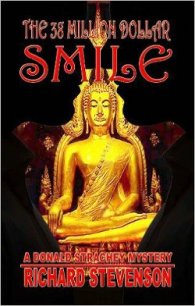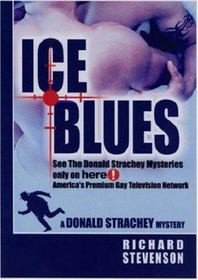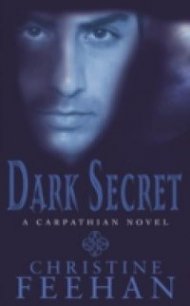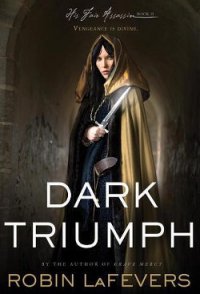Congo - Crichton Michael (книги регистрация онлайн бесплатно .TXT) 📗
HUSTN CONFRMS CONSRTUM ONSITE ZINJ PROBABILITY 1.000. TAK NO FURTHR RSKS. SITUTN HOPELSS.
“I can’t believe it,” Ross said. “It’s all over.”
Elliot sighed. “My feet hurt,” he said.
“I’m tired,” Munro said.
“The hell with it,” Ross said.
Utterly exhausted, they all went to bed.
DAY 8: KANYAMAGUFA
1. Descent
EVERYONE SLEPT LATE ON THE MORNING OF JUNE 20. They had a leisurely breakfast, taking the time to cook a hot meal. They relaxed in the sun, and played with Amy, who was delighted by this unexpected attention. It was past ten o’clock before they started down Mukenko to the jungle.
Because the western slopes of Mukenko are sheer and impassible, they descended inside the smoking volcanic crater to a depth of half a mile. Munro led the way, carrying a porter’s load on his head; Asari, the strongest porter, had to carry Amy, because the rocks were much too hot for her bare feet.
Amy was terrified, and regarded the human persons trekking single-file down the steep inner cone to be mad. Elliot was not sure she was wrong: the heat was intense; as they approached the lava lake, the acrid fumes made eyes water and nostrils burn; they heard the lava pop and crackle beneath the heavy black crust.
Then they reached the formation called Naragema-the Devil’s Eye. It was a natural arch 150 feet high, and so smooth it appeared polished on the inside. Through this arch a fresh breeze blew, and they saw the green jungle below. They paused to rest in the arch, and Ross examined the smooth inner surface. It was part of a lava tube formed in some earlier eruption; the main body of the tube had been blown away, leaving just the slender arch.
“They call it the Devil’s Eye,” Munro said, “because from below, during an eruption, it glows like a red eye.”
From the Devil’s Eye they descended rapidly through an alpine zone, and from there across the unworldly jagged terrain of a recent lava flow. Here they encountered black craters of scorched earth, some as deep as five or six feet. Munro’s first thought was that the Zaire army had used this field for mortar practice. But on closer examination, they saw a scorched pattern etched into the rock, extending like tentacles outward from the craters. Munro had never seen anything like it; Ross immediately set up her antenna, hooked in the computer, and got in touch with Houston. She seemed very excited.
The party rested while she reviewed the data on the little screen; Munro said, “What are you asking them?”
“The date of the last Mukenko eruption, and the local weather. It was in March-Do you know somebody named Seamans?”
“Yes,” Elliot said. "Tom Seamans is the computer programmer for Project Amy. Why?”
“There’s a message for you,” she said, pointing to the screen.
Elliot came around to look: SEMNS MESG FOR ELYT STNDBY.
“What’s the message?” Elliot asked.
“Push the transmit button,” she said.
He pushed the button and the message flashed: REVUWD ORGNL TAPE HUSTNNUN
“I don’t understand,” Elliot said. Ross explained that the “M” meant that there was more message, and he had to press the transmit button again. He pushed the button several times before he got the message, which in its entirety read:
REVUWO ORGNL TAPE HUSTN NU FINDNG RE AURL SIGNL INFO-COMPUTR ANLYSS COMPLTE THNK ITS LNGWGE.
Elliot found he could read the compressed shortline language by speaking it aloud: “Reviewed original tape Houston, new finding regarding aural signal information, computer analysis complete think it’s language.” He frowned. “Language?”
Ross said, “Didn’t you ask him to review Houston’s original tape material from the Congo?”
“Yes, but that was for visual identification of the animal on the screen. I never said anything to him about aural information.” Elliot shook his head. “I wish I could talk to him.”
“You can,” Ross said. “If you don’t mind waking him up.” She pushed the interlock button, and fifteen minutes later Elliot typed, Hello Tom How Are You? The screen printed HLO TOM HOURU.
“We don’t usually waste satellite time with that kind of thing,” Ross said.
The screen printed SLEPY WHRERU.
He typed, Virunga. VIRNGA.
“Travis is going to scream when he sees this transcript,” Ross said. “Do you realize what the transmission costs are?”
But Ross needn’t have worried; the conversation soon became technical:
RECVD MESG AURL INFO PLS XPLN.
AXIDENTL DISKVRY VRY XCITNG-DISCRIMNT FUNXN COMPT ANLSS 99 CONFDNCE LIMTS TAPD AURL INFO {BRETHNG SOUNS} DEMNSTRTS CHRCTRISTX SPECH.
SPSFY CHRCTRISTX.
REPETNG ELMNTS-ARBTRARY PATRN-STRXRAL RLATNSHPS-PROBLY THRFOR SPOKN LNGWGE.
KN U TRNSLTE?
NOT SOFR.
WHT RESN?
COMPUTR HAS INSFSNT INFO IN AURL MESG-WNT NOR DATA-ST WORKNG-MAYB NOR TOMORO-FINGRS X.
RLY THNK GORILA LNGWGE?
YES IF GORILA.
“I’ll be damned,” Elliot said. He ended the satellite transmission, but the final message from Seamans remained on the screen, glowing bright green:
YES IF GORILA.
2. The Hairy Men
WITHIN TWO HOURS OF RECEIVING THIS unexpected news, the expedition had its first contact with gorillas.
They were by now back in the darkness of the equatorial rain forest. They proceeded directly toward the site, following the overhead laser beams. They could not see these beams directly, but Ross had brought a weird optical track guide, a cadmium photocell filtered to record the specific laser wavelength emission. Periodically during the day, she inflated a small helium balloon, attached the track guide with a wire, and released it. Lifted by the helium, the guide rose into the sky above the trees. There it rotated, sighted one of the laser lines, and transmitted coordinates down the wire to the computer. They followed the track of diminishing laser intensity from a single beam, and waited for the “blip reading,” the doubled intensity value that would signal the intersection of two beams above them.
This was a slow job and their patience was wearing thin when, toward midday, they came upon the characteristic three-lobed feces of gorilla, and they saw several nests made of eucalyptus leaves on the ground and in the trees.
Fifteen minutes later, the air was shattered by a deafening roar. “Gorilla,” Munro announced. “That was a male telling somebody off.”
Amy signed, Gorillas say go away.
“We have to continue, Amy,” he said.
Gorilla no want human people come.
“Human people won’t harm gorillas,” Elliot assured her. But Amy just looked blank at this, and shook her head, as if Elliot had missed the point.
Days later he realized that he had indeed missed the point.
Amy was not telling him that the gorillas were afraid of being harmed by people. She was saying that the gorillas were afraid that the people would be harmed, by gorillas.
They had progressed halfway across a small jungle clearing when the large silverback male reared above the foliage and bellowed at them.
Elliot was leading the group, because Munro had gone back to help one of the porters with his pack. He saw six animals at the edge of the clearing, dark black shapes against the green, watching the human intruders. Several of the females cocked their heads and compressed their lips in a kind of disapproval. The dominant male roared again.


![[Magazine 1968-012] - The Million Monsters Affair - Davis Robert Hart (серия книг .txt) 📗](/uploads/posts/books/56864/56864.jpg)

